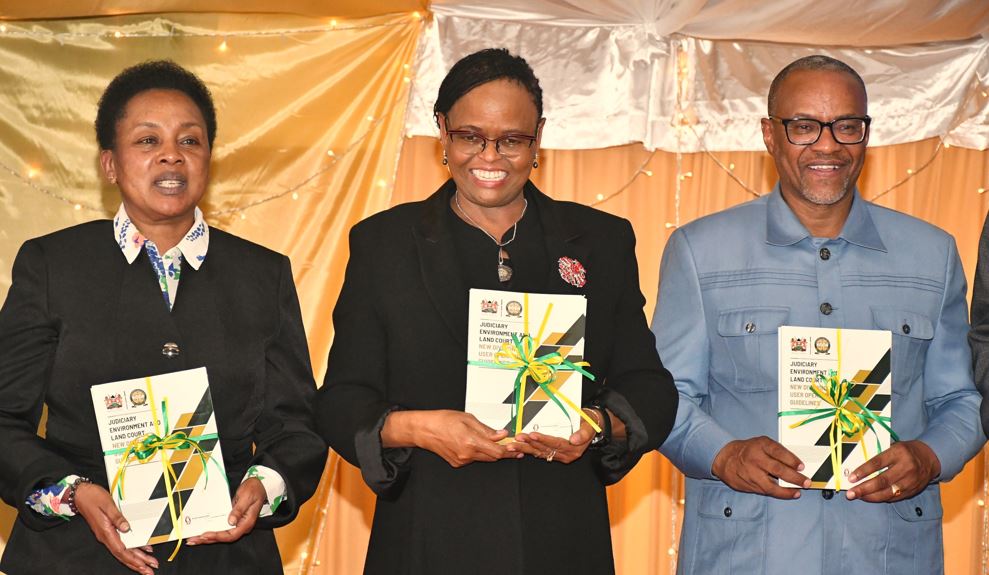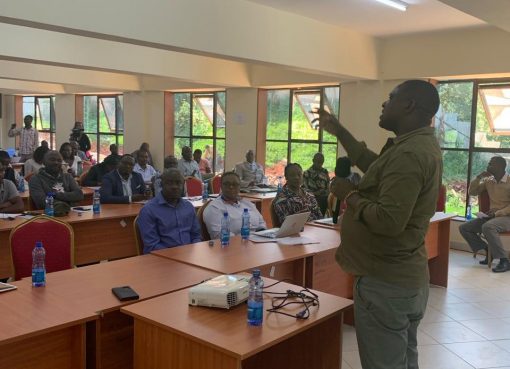The Chief Justice and President of the Supreme Court, Lady Justice Martha Koome, has hailed the progress made by the Environment and Land Courts (ELC) in resolving disagreements across the country.
Koome said in the just concluded Financial Year (FY 2022/23) which ended on June 30th this year, the ELC resolved a total of 9,612 cases against 6,585 cases that were filed in the course of the year, translating into an impressive Case Clearance Rate (CCR) of 146 per cent.
“This represents more than just numbers; it represents the courts’ unwavering commitment to expedite the dispensation of justice. In this regard, I want to laud the 32 ELC Court Stations out of the 37 ELC Court Stations that attained a Case Clearance Rate of over 100 per cent. I also celebrate Kakamega ELC and the Nakuru ELC for leading the pack with their impressive Court Clearance Rates of over 200 per cent,” she said.
However, speaking during the ELC Judges’ annual conference in Naivasha on Monday, Koome noted that 14,069 cases were still pending in ELC courts at the end of the Financial year, and of these, 4,782 cases have been pending for over three (3) years, which is beyond their targets.
She urged the officers present to find strategies for the swift resolution of such cases, noting that this will improve courts’ productivity and enhance public confidence in the country’s justice system.
To this end, she urged the judges to embrace the ‘no adjournment policy’ which is a critical aspect of the quest for efficiency in the judiciary, and ensure that they minimise adjournments to the greatest extent possible.
During the conference, the CJ also launched the Environment and Planning Division and The Land Division of the ELC courts.
Koome explained that the Land Division will help to ensure that land disputes are resolved fairly and expeditiously, while the Environment and Planning Division will help to ensure that Kenya’s Environmental resources are protected for the benefit of all Kenyans.
She stated that the move has been necessitated by the desire to enhance the efficiency and effectiveness of the court, and by creating the two specialised divisions, the judiciary will be better positioned to handle the emerging cases in a timely and efficient manner.
“The operationalization of these two divisions is also a response to the changing needs and demands of our society, which faces unprecedented challenges and opportunities in relation to environmental and land issues,” the CJ stated.
Consequently, Koome advised all ELC Judges and staff to embrace this change and work together to make it a success, and she also called upon all stakeholders involved in environmental and land matters to support this initiative and cooperate with ELC in fulfilling its mandate.
“I believe that by working together, we will make great strides in enhancing access to justice, improving the efficiency of our legal processes, and ensuring the preservation of our precious environment for generations to come,” said Koome, while exuding confidence that these two divisions will play a vital role in upholding the rule of law and protecting the environment in Kenya.
She noted that land is a very central and emotive issue in Kenya, with the majority of cases reaching the courts being land-related, and even those that appeared otherwise, often bore a significant land dimension, which is more than a mere asset as it is intrinsically tied to people’s identity, culture, and history; thus, judicious adjudication is vital for peaceful coexistence.
To this end, the CJ said the Land Division holds a role that extends beyond the courtroom and must stand as a bulwark of society and the hinge on which the country’s collective harmony pivots.
However, in the same breath, Koome noted that the climate crisis was escalating with each passing day and has brought in new unprecedented challenges such as environmental degradation, floods, heat waves, droughts, and a myriad of other climate change-induced adversities, which now find their way to the courts, bringing with them complex questions of law, science, and policy that will now be handled by the Environment and Planning Division.
The CJ further observed that since ELC was operationalized over 11 years ago, it had determined thousands of cases involving complex and diverse matters pertaining to the environment and land, thereby contributing to sustainable development, social harmony, and peaceful co-existence amongst communities.
During the same period, ELC has also been at the forefront of developing progressive jurisprudence on environment and land law that is being positively lauded both within and beyond our borders.
“Our commitment to ecological justice extends beyond individual cases to encompass the broader mandate of environmental stewardship. As we do this, we must remember that we are not just delivering justice in individual cases but also building a legacy for generations to come,” she said.
The Environment and Land Court is a superior court established by Article 162(2) of the Constitution of Kenya. There are 37 Environment and Land Court stations spread across the country, with 53 Judges of the court led by Presiding Judge Oscar Angote.
The court exercises appellate jurisdiction over the decisions of subordinate courts and local tribunals such as the National Land Commission (NLC) and the National Environment Tribunal with respect to matters falling within its jurisdiction.
By Mabel Keya-Shikuku




